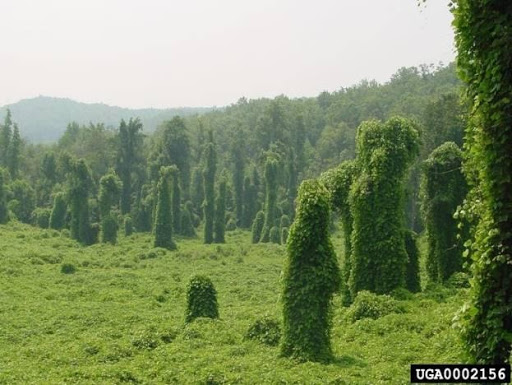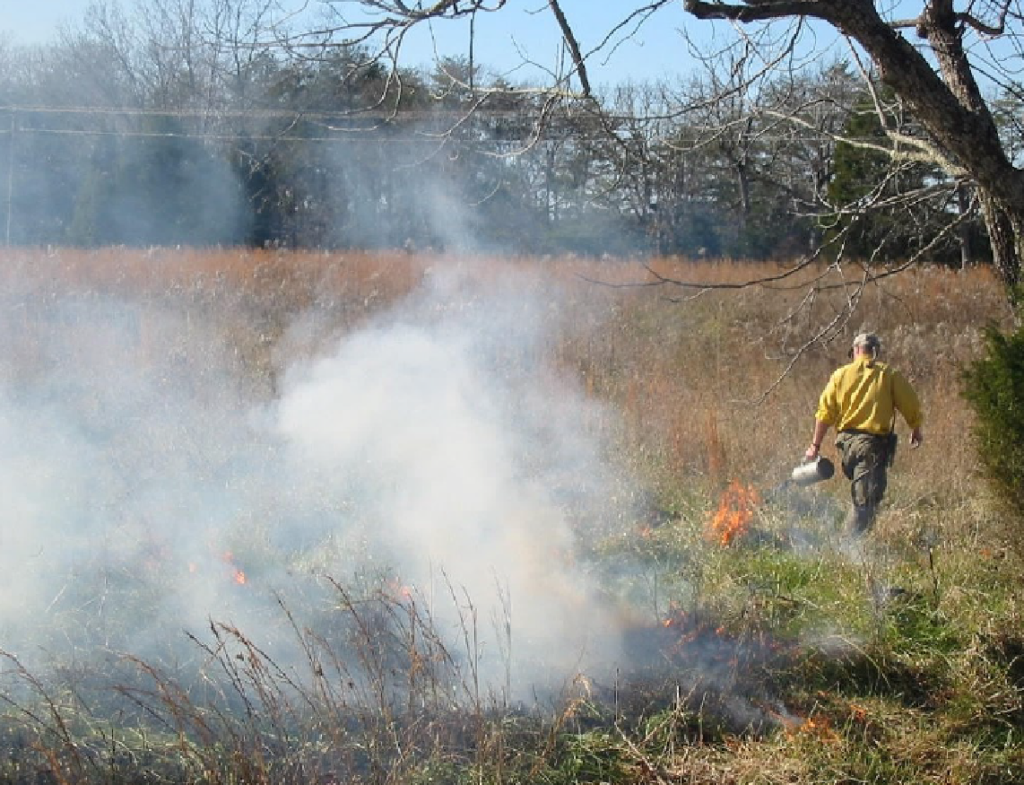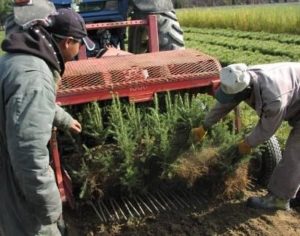Trees do best when planted in early spring or late fall, when the ground is not frozen but the seedling is dormant and temperatures are cool. As we enter into fall, those in the field of buffer establishment are thinking ahead for the fall and spring planting season and performing maintenance on newly established site. What are the items on our check list in early fall?
Site evaluation and competition control
What plants are there? How do I manage weeds that will compete with my trees?

Figure 1 Typical buffer site before planting. Photo credit Ann Marie Roberts, JRA.
The first step in planning a riparian buffer project through planting or natural regeneration is the identification and evaluation of existing vegetation. When evaluating a buffer site, our main objective is to identify those plants that will compete with young tree establishment. Likewise, an initial scouting of a site may reveal species that would be good to protect, such as some native weeds or tiny regenerating tree seedlings. A typical open field that will be converted to forest buffer is dominated with grass. Grass is a strong competitor with tree seedlings for water and resources. If a field has been fallow for a while it will also likely have a few weeds. Non-native, invasive weeds are those that have been identified to cause economic or environmental harm. They are fast, aggressive and often produce large amounts of seed. Special attention should be paid to manage these weeds to prevent them from taking over a site.
If invasive weeds are present, they should be removed, ideally before they produce seed. The soil at any location will hold dormant seeds, sometimes for many years, until a disturbance allows those seeds to sprout. If invasive species are present, their seeds will fill the soil seed bank. Preparing a site where invasive species are present can take several seasons to exhaust the soil seed bank. This will involve removing newly sprouted invasive chemically with herbicides, by smothering or by hand and power tools.

Figure 2 Spot spraying herbicide as competition control (left). Photo credit VDOF. Scalping of sod prior to planting (right). Photo credit Deya Ramsden,VDOF.
If invasive weeds are present, they should be removed, ideally before they produce seed. The soil at any location will hold dormant seeds, sometimes for many years, until a disturbance allows those seeds to sprout. If invasive species are present, their seeds will fill the soil seed bank. Preparing a site where invasive species are present can take several seasons to exhaust the soil seed bank. This will involve removing newly sprouted invasive chemically with herbicides, by smothering or by hand and power tools.
If a site has good potential for natural regeneration (i.e. desirable, mature trees are nearby to provide a seed source) then a light disturbance of the soil, such as with a disc attachment on a tractor can remove the grass and allow tree seeds to germinate.
In some situations, where both grass and a number of weeds are present a buffer planning professional may choose to do a broadcast spray of herbicide to give the seedlings a good start in a weed free area or allow natural regeneration to take place. A broadcast spray may be accompanied by a prescribed burn or mowing. A prescribed burn involves setting a fire intentionally to burn off dry weed and grass growth. It can be performed by trained professionals, such as most Va. Department of Forestry staff.

Figure 3 A kudzu vine invasion. (Photo credit – within PowerPoint of Jerre Creighton, VDOF)

Figure 4 Disking attachment on a tractor. Photo credit – through a PowerPoint presentation by Jerre Creighton, VDOF.

Figure 5 Performing a prescribed burn as site preparation. Photo credit VDOF staff.
Seedlings
What species and how many seedlings trees do I need?

Figure 6 Lifting Norway spruce seedlings for planting. Photo credit Joshua McLaughlin, VDOF.
In fall the tree nurseries where the plant stock originates begin planning how many seedlings to dig up or “lift” so they may fill orders for upcoming fall and spring plantings. We start requesting seedlings for spring plantings in October.
Spacing of seedlings is an important consideration requiring forethought. How wide will this tree get in 10, 20 or 50 years? Typical spacing guidelines are 12 feet between hardwood species and 5 feet between pines. Trees should be 15 feet from paths or roads to allow for clearance from people or vehicles.
Maintenance
How do we help young trees thrive?

Figure 6 Lifting Norway spruce seedlings for planting. Photo credit Joshua McLaughlin, VDOF.
